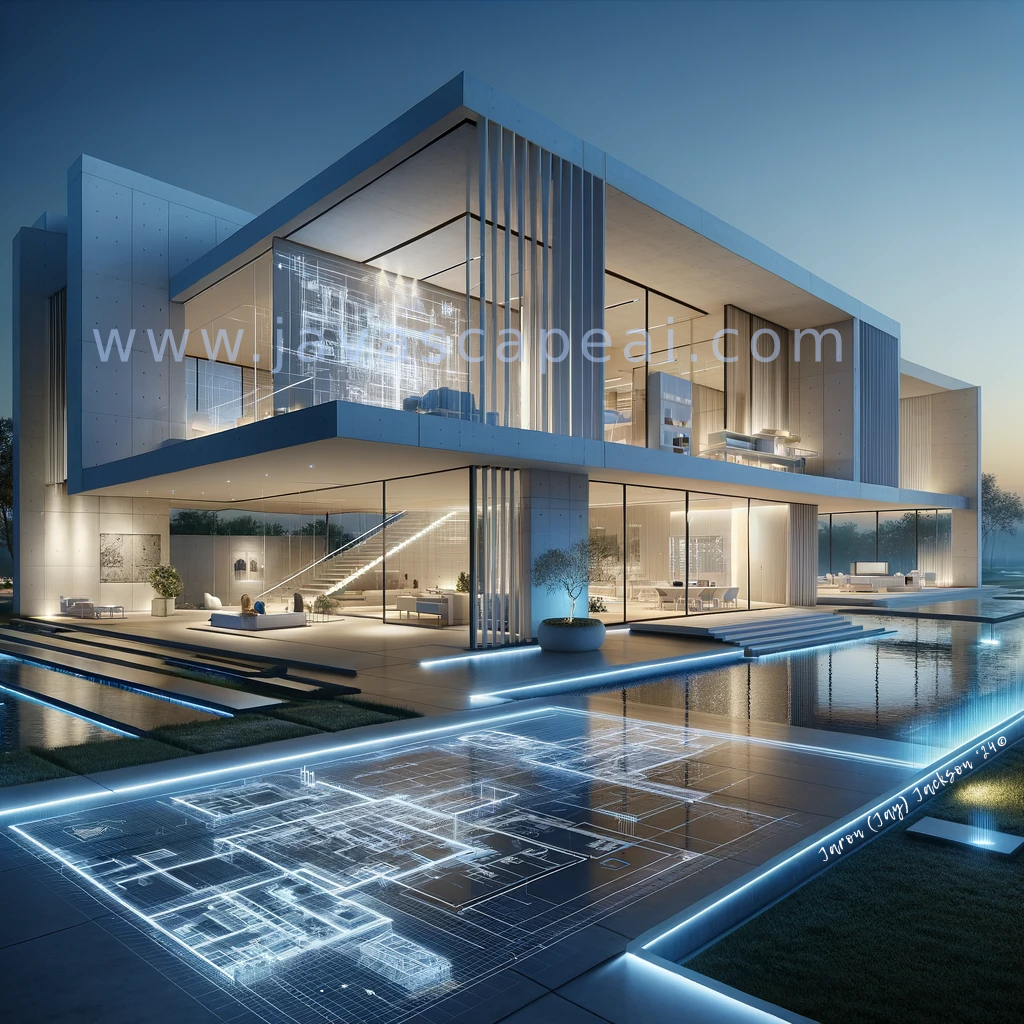Transforming the Future of Design and Construction

Introduction
The world of architecture is undergoing a profound transformation, thanks to the rise of Artificial Intelligence (AI). From generative design to automation, AI is reshaping how architects conceive, design, and execute projects. This article delves into the impact of AI in architecture, exploring its benefits, challenges, and future potential.
The Role of AI in Architecture
AI is revolutionizing architecture by enhancing efficiency, creativity, and sustainability. Key areas where AI is making a significant impact include:
AI-Powered Design Tools
- Generative Design: AI algorithms generate multiple design options based on input constraints, optimizing for aesthetics, cost, and sustainability.
- Parametric Modeling: AI-driven parametric tools allow architects to create complex structures with precision.
- Building Information Modeling (BIM): AI enhances BIM by automating clash detection, energy efficiency analysis, and real-time project monitoring.
AI in Urban Planning and Sustainability
- Smart Cities: AI helps design urban spaces that are energy-efficient and resilient.
- Environmental Impact Assessment: AI models predict how buildings will interact with their surroundings, optimizing sustainability.
- Energy-Efficient Architecture: AI analyzes material choices and energy consumption to create greener buildings.
Automation in Architectural Workflows
- Construction Process Optimization: AI automates repetitive tasks such as site analysis and blueprint modifications.
- Project Management: AI-powered software tracks project timelines, reduces errors, and optimizes resource allocation.
Key Benefits of AI in Architecture
AI is redefining architectural practices, bringing numerous advantages:
Enhanced Efficiency and Productivity
AI reduces manual workloads, automating complex calculations and drafting processes, allowing architects to focus on creativity.
Sustainable and Smart Building Designs
AI assists in designing energy-efficient buildings by analyzing climate conditions, materials, and energy consumption patterns.
Cost Reduction and Resource Optimization
AI helps in reducing material waste and labor costs by predicting the most efficient use of resources.
Improved Collaboration and Decision-Making
Cloud-based AI tools facilitate seamless collaboration between architects, engineers, and clients, enhancing project outcomes.
Challenges and Limitations
Despite its advantages, AI in architecture comes with challenges:
Ethical Concerns
- Job Displacement: AI-driven automation may replace some traditional roles in architecture.
- Bias in AI Design: AI-generated designs might reflect biases in training data, leading to suboptimal solutions.
Dependence on AI vs. Human Creativity
AI lacks human intuition and emotional intelligence, making it a tool rather than a replacement for architects.
Data Security and Privacy Risks
AI relies on vast amounts of data, raising concerns about data security and misuse.
Learning Curve for Professionals
Architects need to acquire new skills to work effectively with AI-driven tools.
The Future of AI in Architecture
The future of AI in architecture is promising, with advancements expected in: https://javascapeai.com/product/speculative-futures-architect/
AI and the Architect’s Evolving Role
Rather than replacing architects, AI will enhance their abilities, making them AI-assisted designers.
Predictions for AI-Driven Architecture
- AI-powered smart materials that adapt to environmental changes.
- Fully automated construction sites with AI-controlled robotics.
- AI-driven real-time simulations to test architectural designs.
AI-Human Collaboration
Architects and AI will work together to push the boundaries of design, balancing efficiency and creativity.
Case Studies & Real-World Examples
Several companies are leading the AI revolution in architecture:
- Zaha Hadid Architects: Uses AI-driven parametric design to create futuristic structures.
- Autodesk’s AI-Powered Tools: Enhancing BIM capabilities and generative design.
- AI in Smart Cities: Singapore and Tokyo are leveraging AI for urban planning.
Conclusion
AI is transforming architecture, offering immense opportunities while presenting challenges that need careful navigation. As AI continues to evolve, architects must adapt by integrating AI into their workflow while preserving human creativity and intuition. The future of architecture lies in the seamless collaboration between AI and human ingenuity.
All trademarks, logos, visual design, images, symbols, and content on this website are the exclusive property of JAVASCAPE AI. Any unauthorized use, reproduction, or distribution without explicit permission is strictly prohibited.



